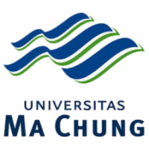MANAGEMENT OF POLITENESS STRATEGIES AND RHETORICAL DEVICES IN DONALD TRUMP’S SPEECHES DURING THE CONFLICT WITH IRAN: PRAGMATIC VIEW
Abstract
The research aims to figure out the use of politeness strategies and rhetorical devices used by Trump and attempt to reveal the behavior and purpose behind the speeches delivered by Donald Trump during the conflict with Iran taken by the videos in The White House channel on YouTube which are published on January 4th and 9th, 2020. This study employs a descriptive qualitative method by involving the theories by (Brown & Levinson, 1987), (Jowett & O’Donnell, 2012), (G., Preminger, & Brogan, 1994), and Wodak (1987). This study found that Donald Trump mostly uses positive politeness to attend his audience’s attraction to reach his goals and based on the data of the occurance of rhetorical devices, Donald Trump mostly uses Ethos in persuasion which means he frequently shows his good characteristic to reveal people’s trust and followed by using manipulation in each of his in order to manipulate people for achieving his purposes.
References
G., E., Preminger, A., & Brogan, T. V. F. (1994). The new Princeton encyclopedia of poetry and poetics. Princeton University Press. https://doi.org/10.2307/605141
Jowett, G. S., & O’Donnell, V. (2012). Propaganda and persuasion sixth edition. SAGE Publications, Inc.
Litosseliti, L. (2010). Research methods in linguistics. Continuum.
Miles, M. B., Huberman, M. a, & Saldana, J. (2014). Qualitative data analysis second edition. SAGE Publications, Inc. https://doi.org/January 11, 2016
Nasution, A. F., & Ariyanti, L. (2015). The usage of face threatening act in Princess Diaries 1 and Princess Diaries 2 : The Royal Engagement Movies. State University of Surabaya.
Wodak, R. (1987). Language, power and Idiology sin political discourse. John Benjamins Publishing Company. https://doi.org/10.1515/text.1.1987.7.4.377
Yule, G. (2010). The study of language fourth edition. Oxford University Press. https://doi.org/10.1007/s13398-014-0173-7.2
Open Access Policy
This is an open access journal which means that all content is freely available without charge to the users or their institution. Users are allowed to read, download, copy, distribute, print, search, or link to the full texts of the articles, or use them for any other lawful purpose, without asking prior permission from the publisher or the author. This is in accordance with the BOAI definition of open access.
![]() This work is licensed under a Creative Commons Attribution-ShareAlike 4.0 International License.
This work is licensed under a Creative Commons Attribution-ShareAlike 4.0 International License.

















